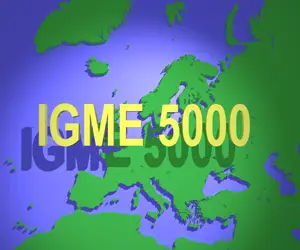Multiscale space-related datasets and data products in 1D, 2D and 3D are the fundamental components of geological baseline information delivered by national geological survey organisations. These datasets and products, including description of wells, geological maps, and 3D geomodels, show and explain the geological architecture of the surface and subsurface of the Earth’s crust. Model information comprises lithology, lithostratigraphic units, age (of rocks and events), structural elements (e.g. faults and thrusts), geomorphological features, lithotectonic units, and others. This type of geological baseline information lays the indispensable groundwork for applied geoscientific projects and problem solving.
For many years, the EuroGeoSurveys (EGS) community has worked in EU co-funded projects to harmonise such datasets across Europe. Results of those projects are hosted in EGDI (e.g. the OneGeologyEurope onshore geological map dataset of many European countries at a scale of 1: 1 million and GeoERA datasets) alongside with other datasets from Europe such as the International Geological Map of Europe in scale 1: 5 million (IGME 5000). Nevertheless, data gaps are still huge. In addition, the framework of sound scientific vocabularies, datamodels and workflows, a necessary precondition for further transnational data harmonisation, is still under development.
3D geomodels are the most challenging, however also most effective way to share data and information, and to communicate about the architecture of the Earth’s crust. This type of models have a long-lasting use in the mining and oil&gas industries and more recently in other geoscience applications such as urban geology, risk management or geothermal energy. The construction of 3D geomodels generally relies on proprietary packages. Current EGS efforts are directed towards bridging the gap between 2D and 3D to produce geomodels easily usable by the end-applications, e.g. for simulating processes. To achieve this goal, common methodologies and developments are foreseen at the EGS level with the support of open source solutions.
Within the EuroGeoSurveys community, ongoing and future efforts related to basic geology are undertaken primarily by the Geological Mapping & Modelling Expert Group, with strong support of the Spatial Information Expert Group in all technical aspects.
Basic Geology layers in the EGDI map viewer. All maps will open in a new tab:




